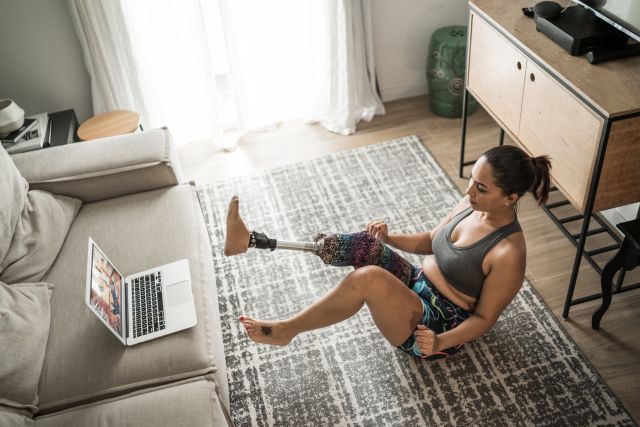Updated on September 25, 2024.
Going to the gym can mean you get an excellent workout. But for some people, the expense and travel time can be tough. Others are uncomfortable working out among other people.
But staying home doesn’t mean giving up on fitness. In fact, working out at home can be as effective as going to the gym. All you need is a little space, some simple equipment, and the motivation to get moving.
Location, location, location
Home exercise is a good way to improve your health. One clear advantage: It beats not working out at all. For example, a 2021 study in Ageing Research Reviews combined data from 17 studies of unsupervised home-based exercise programs in older adults. The authors concluded that, compared with not exercising, this type of exercise can improve muscle strength, muscular endurance, and balance, among other aspects of fitness.
A home fitness routine can be comparable to a gym workout in terms of health benefits, too. Another 2021 study, this one published in Clinical and Experimental Hypertension, compared home-based versus gym-based exercise programs in middle-aged men with hypertension. Both led to improvements in fitness and body weight.
In an older, 2008 study published in Diabetes Care, researchers had middle-aged adults who were at risk for type 2 diabetes do a resistance-training workout for the better part of a year. Some were given gym programs, while others were given simple, low-tech exercises they could do using household objects (like soup cans), elastic bands for resistance, and their own body weight (think push-ups).
By the end of the study, participants in both groups had lost about the same amount of weight. And the number of people with abnormally high blood sugar (without meeting the criteria for diabetes)—a condition called impaired glucose tolerance—dropped significantly in both groups.
Do your own thing
Whether you prefer the gym scene or the privacy of your own home, the most important thing is to choose a workout you like. Then, speak with a healthcare provider to make sure it’s a good fit.
For home workouts, you can keep it simple with a few hand weights, some resistance bands, a sturdy box for step exercises, and a mat. Try to get in at least 150 minutes each week of moderate-intensity exercise, plus two sessions a week of resistance training.
In addition, you can turn your errands into exercise and stay active while you’re sitting in a chair, grabbing groceries, or waiting in line.







